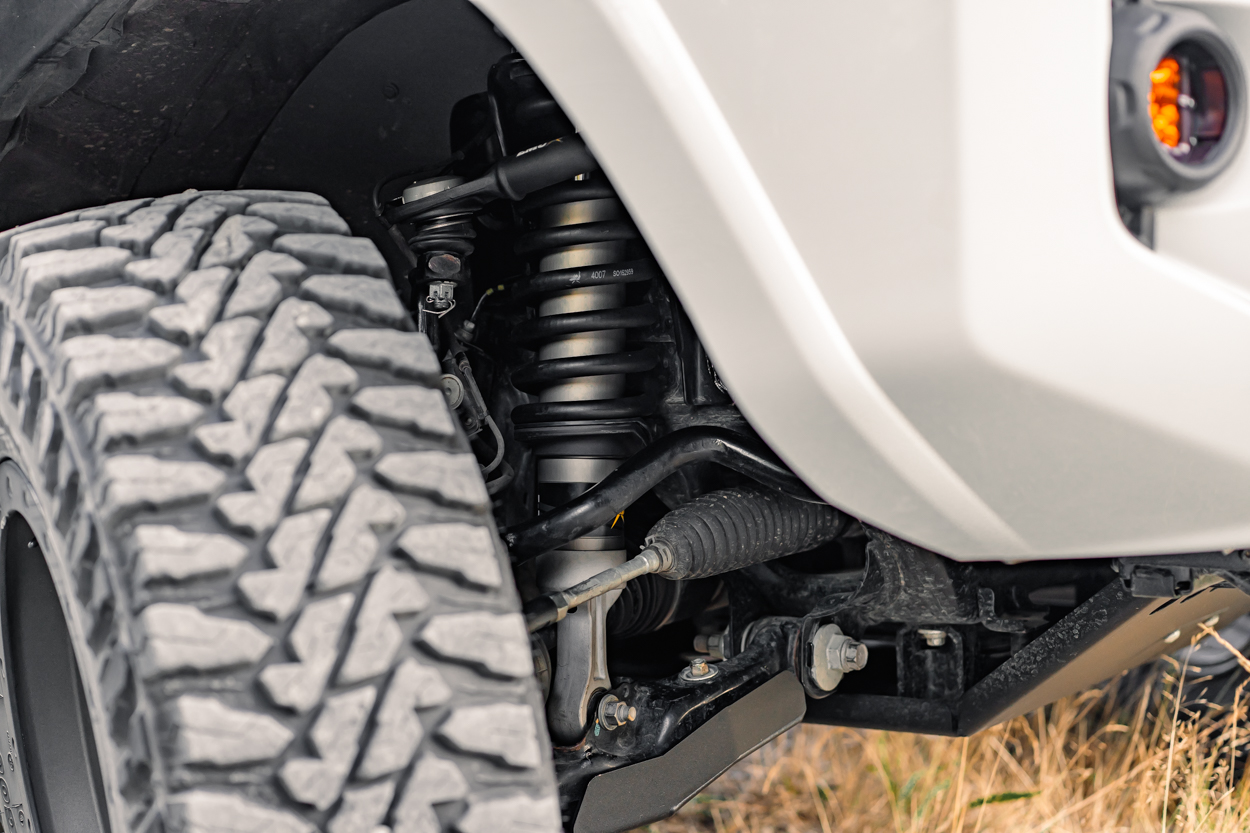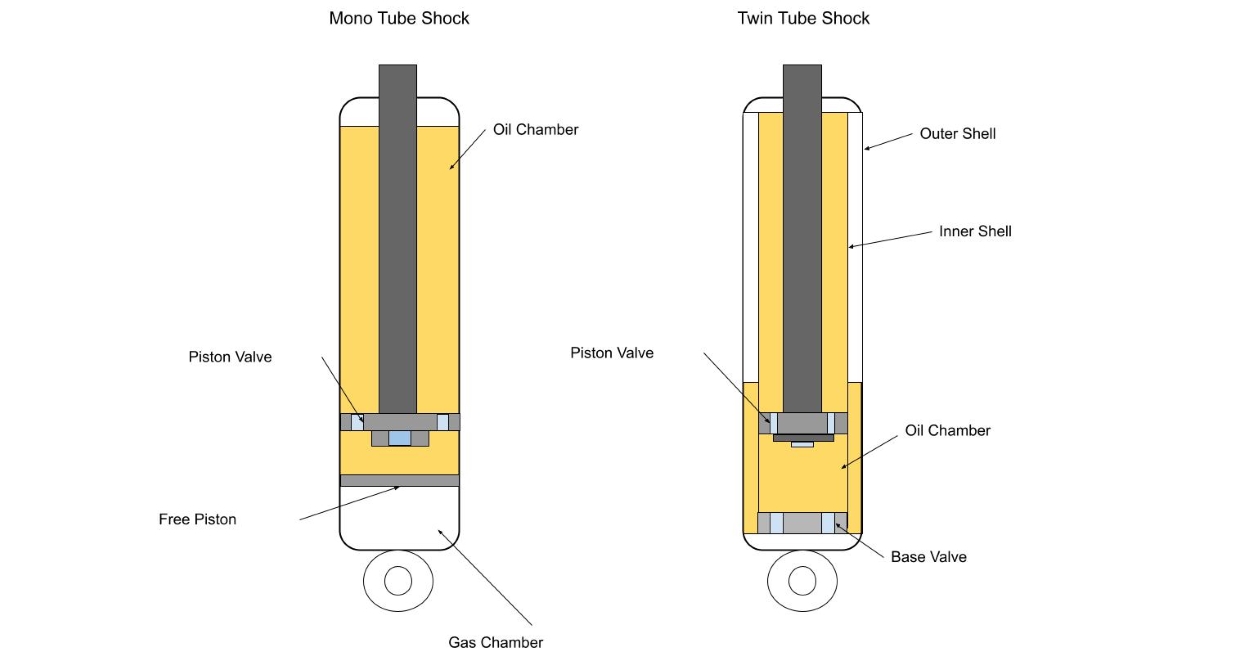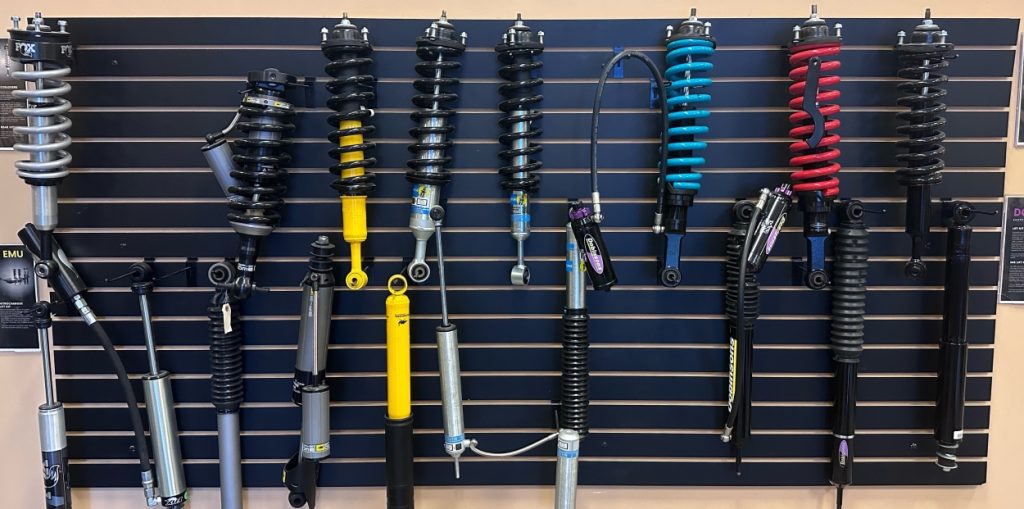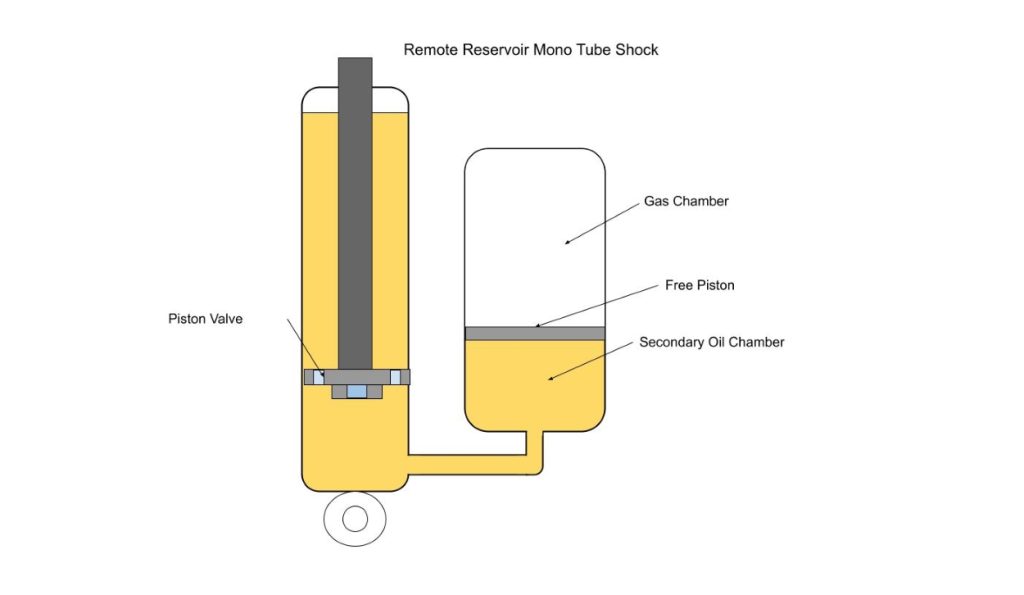
There’s no shortage of opinions in the debate of monotube vs. twin-tube shocks. Today, I am going to break it down so you can understand each of their benefits before you invest in this pricey component.
We will cover everything from the fundamentals of what a shock absorber is to the technical aspects and common misconceptions. By the end, you will feel like an expert when picking out a new set of shocks to outfit your daily driver, weekend warrior, or purpose-built rig.
Let’s get into it!
Table Of Contents
What Is A Shock Absorber?

Shocks are a fundamentally simple yet hugely important component of a vehicle. Their purpose is to dampen the spring, keeping it controlled so you don’t continuously bounce up and down after going over a bump. Generally, they comprise a piston rod, non-compressible hydraulic fluid, a compressible gas, and a shell to house it all.
Shocks convert kinetic energy into thermal (heat) energy to achieve two things in most driving conditions; keeping your tires on the ground and smoothing out bumps.
For hitting the trails, it’s a little different. The shocks work with the spring to keep you in control at high and low speeds, such as rock crawling. For high-speed dirt or gravel roads, it’s important to keep your tires on the ground to remain in control.
Larger, more advanced shocks will improve your control down dirt roads dramatically and help make up for the loose terrain. This is because the faster your suspension moves, the more resistance the shock will provide. Better shocks = better dampening and control; it’s pretty simple.
If you feel like your vehicle is going to lose control while on dirt roads or your suspension is too bouncy, your shocks may be due for an upgrade. Or, you may just be in a Jeep.
How Shocks Work

When you go over a bump, the shock compresses. The valve(s) restricts the fluid passing through, as it is on its way to compressing the gas. Essentially, these two forces absorb the energy from the ground and spring, only letting the suspension compress and rebound at controlled speeds. This fundamental function is the same in both types of shocks.
How they get there is where things part ways.
Monotube
In a monotube design, all of the fluid is in one chamber, and the fluid is separated from the gas. In this design, the piston valve is doing all of the work. This allows for a very smooth and consistent ride. A potential downside of this design is the need for the gas to be at a much higher pressure to make up for the single valve.
Twin-Tube
In a twin tube, the base valve does most of the work. It controls how fast fluid can go in between the two shells and allows for a lower gas pressure inside of the shock since the fluid is flowing through twice as many valves. The valves themselves create more resistance, leaving less force for the gas to compress.
Heat Dissipation

Spoiler alert! The monotube wins in this area. The larger shock size and increased oil capacity mean this design is simply better at dissipating heat. This applies to different styles of monotube shocks as well. Remote Reservoir (RR) shocks, which have a secondary oil chamber connected to the main one, are especially good at dissipating heat.
Even though the monotube wins in this department, that does not mean that twin-tube shocks are bad at heat dissipation. Many companies, such as Ironman 4×4, have developed technologies such as their Foam Cell Pro shocks. These have a foam layer where the gas is contained, so the fluid and gas don’t mix. As a result, the fluid is in contact with the entire outer shell. This durable construction allows for better heat regulation than traditional twin tubes.
Heat dissipation is almost directly tied to the size of the shell and the amount of oil. Generally, the more you spend, the bigger the shocks and thus, better performance. For a daily driver or a slow and precise rock crawler, heat might not be the biggest concern, and you should still consider twin-tube shocks.
Common Misconceptions

Unfortunately, for the consumer, there is plenty of misinformation out there that can lead to you making an uninformed purchase. Twin-tube and monotube shocks both have their place in the off-road world. However, opinions and misconceptions can make it hard to figure out when and where they should be used.
The first misconception I noticed is that monotube shocks are uncomfortable and stiff due to the high pressure in the gas chamber. There are a lot of factors that contribute to stiffness in a shock. First, traditional designs have high-pressure gas (150-250 PSI above the atmosphere for most Toyotas). This causes the shock to be stiffer than a twin tube.
In the real world, though, the difference in this pressure is so small that unless you are a seasoned pro, you probably would not even notice. Shocks with a remote reservoir (RR) can completely counteract this issue and feel smooth.
Now, this does come with a price, literally. Monotube shocks, especially ones with remote reservoirs, are generally more expensive than twin tubes. So, if you’re on a tight budget and can’t afford the luxury of a nice pair of RR shocks, a non-RR version will perform just fine, such as the ARB OME MT64.
The second misconception is shock fade. Shock fade occurs after extensive trail use leads to a reduction of the dampening force. This makes the ride sloppy, uncomfortable, and less controlled. This is also the topic with the most conflicting opinions.
Shock fade is caused by three things: heat, aeration, and cavitation.
Heat
The heat produced by the shock makes the fluid less viscous, generating less dampening force. This is a much more gradual effect, so you might not even notice it. In the end, however, the result is very different from a cold shock.
Aeration
This is when the gas and fluid mix, creating bubbles in the fluid. It causes uneven dampening and reduced resistance. Many people believe that this is the single reason for shock fade. So, when they see the separated design of the monotube, they assume it cannot have shock fade. This is incorrect because there is a third and final villain of shock-fade: cavitation.
Cavitation
In the same way that water boils very easily in a vacuum, a shock with low pressure and high temperature will naturally create bubbles in the fluid. This can affect both styles of shocks but generally affects twin tubes more due to their lower pressure. To avoid this, manufacturers try to maintain high pressure and low temperature.
What I Chose For My 4Runner

The very first thing that I did when I decided to upgrade my suspension was to set a budget. I settled on $2,000 to spend on my suspension in total. This excluded installation costs as I performed the installation myself.
Since I also planned on getting bigger tires, I wanted to play it safe and get adjustable upper control arms as well. After I purchased SPC adjustable upper control arms, it left me with around $1400 to spend on shocks, struts, and springs.
I knew that some of the big high-end brands, such as King and Fox, were out of my price range, so I focused on other name-brand companies that made affordable, quality shocks. It was also important they had good customer support and warranty, just in case. So, I looked at brands like Old Man Emu, Bilstein, Ironman, and Dobinsons.
I had planned to purchase everything during a Black Friday sale, so it gave me a few months to research and think about what shocks would be best for my style of driving. I knew cheaper options like Rough Country weren’t going to cut it.
The next shock I considered was the Dobinsons Nitro shocks. This is their only twin tube shock and also the cheapest in their lineup, with a full set coming in at around $1,295. I knew that the very bumpy trails in my area could exhaust a twin-tube shock light after a few hours of riding. The monotube IMS and MMR were a little out of my budget.

If you have ever looked into buying shocks, you’ve surely heard of the Bilstein 5100s; these monotube shocks may be the most popular budget suspension for most Toyotas. I heavily considered these, but coming in at $950 for a full set, I felt I could get a higher-performing system while still keeping to my budget. Thus, I found the Bilstein 6112/5160. This kit comes in at $1,425, but on Black Friday, it was under $1,300.
After running this suspension for a while, I can say that I made the right choice. The main difference between the 5100 and 6112/5160 is that the latter has a larger shock body and remote reservoirs in the rear. Even after being on trails for hours, I don’t experience any shock fade. As a daily driver, despite having stiffer springs in the back to offset the weight of my drawer system, they ride and handle way better than I expected for a lifted vehicle.
Final Thoughts

Hopefully, after reading this, you feel like an expert when it comes to shocks. After all that research, I sure do!
Both designs have advantages and disadvantages, but the monotube has a more modern design and simply performs better. The biggest downside, however, is price. They are almost always more expensive than twin-tubes.
For those who don’t have an infinite amount of money to spend, don’t worry! Unless you are racing at high speeds in a trophy truck for half a million dollars, you simply don’t need the best monotube shocks out there.
A decent pair of twin tubes will be fine for daily driving and hitting forest roads or mild trails. Remember to consider the weight of your rig and style of driving to help you find a suitable pair of shocks. Best of luck!

Good info. This is the type of thing the industry needs to see more of. Informed buyers!
I’m glad you found the proper shocks. I’ve been going back and forth for a few years now just trying to figure it all out and I never pulled the trigger yet. I live in Virginia and truthfully I’m never going to go rock climbing with my truck. At most I will hit some fire roads, non-paved roads, and small to medium size Rock roads if at all any. But I do no I want to upgrade from the stock suspension. The dipping and rolling is a little too much.